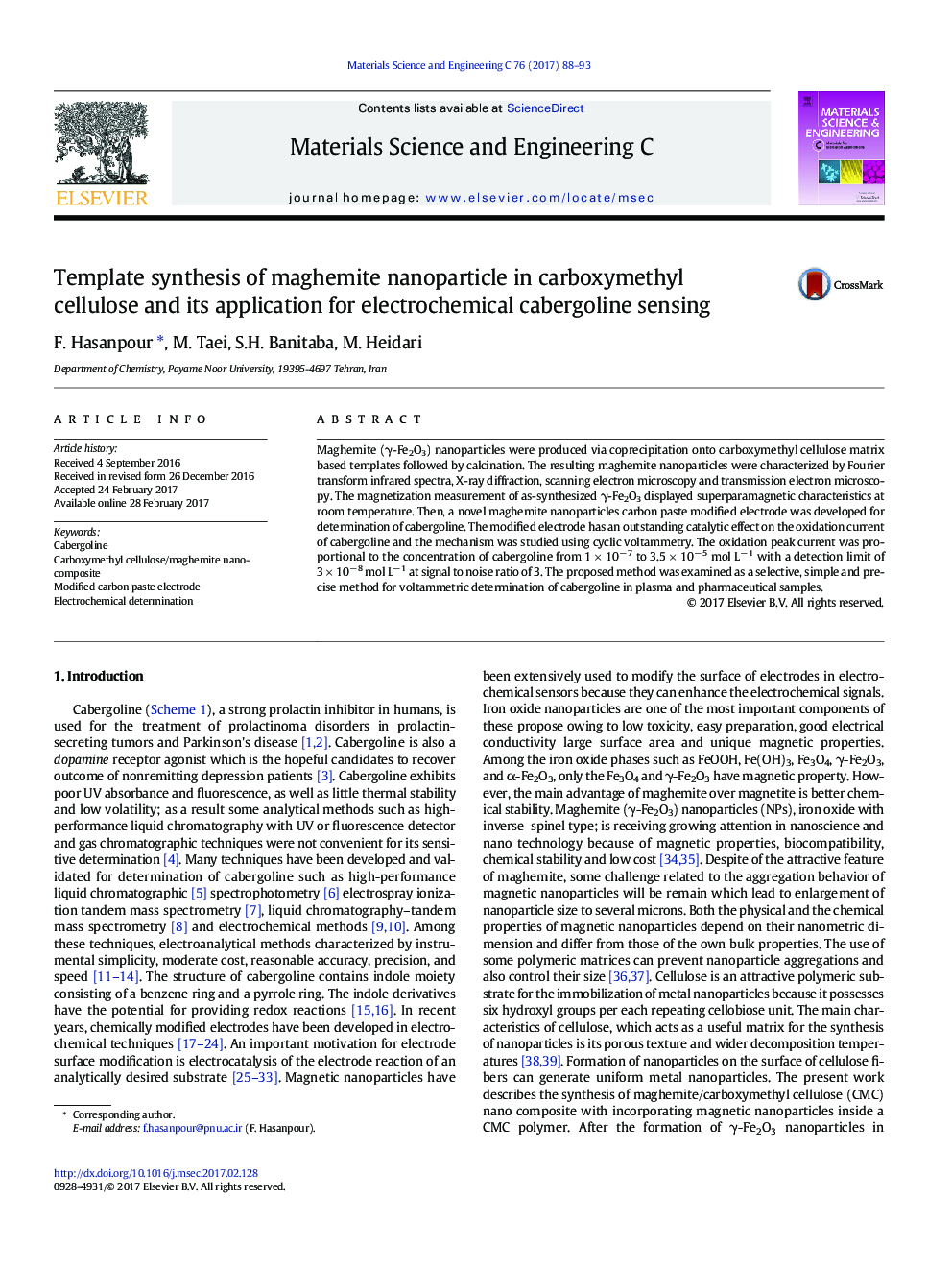| Article ID | Journal | Published Year | Pages | File Type |
|---|---|---|---|---|
| 5435096 | Materials Science and Engineering: C | 2017 | 6 Pages |
â¢Highly porous maghemite nanoparticles were produced via coprecipitation onto carboxymethyl cellulose matrix.â¢Then a novel cabergoline sensor was developed based on γ-Fe2O3 nanoparticles carbon paste modified electrode.â¢The modified electrode has an outstanding catalytic effect on the oxidation current of cabergoline and applied for determination of cabergoline in plasma and pharmaceutical samples.
Maghemite (γ-Fe2O3) nanoparticles were produced via coprecipitation onto carboxymethyl cellulose matrix based templates followed by calcination. The resulting maghemite nanoparticles were characterized by Fourier transform infrared spectra, X-ray diffraction, scanning electron microscopy and transmission electron microscopy. The magnetization measurement of as-synthesized γ-Fe2O3 displayed superparamagnetic characteristics at room temperature. Then, a novel maghemite nanoparticles carbon paste modified electrode was developed for determination of cabergoline. The modified electrode has an outstanding catalytic effect on the oxidation current of cabergoline and the mechanism was studied using cyclic voltammetry. The oxidation peak current was proportional to the concentration of cabergoline from 1 Ã 10â 7 to 3.5 Ã 10â 5 mol Lâ 1 with a detection limit of 3 Ã 10â 8 mol Lâ 1 at signal to noise ratio of 3. The proposed method was examined as a selective, simple and precise method for voltammetric determination of cabergoline in plasma and pharmaceutical samples.
Graphical abstractDownload high-res image (138KB)Download full-size image
